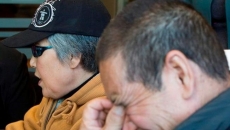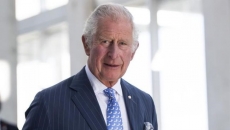OTTAWA - The Health Standards Organization has released a new set of guidelines to help hospital workers manage children's pain — particularly for those who can't communicate when they're hurt.
It's the first national standard in the world focused on pediatric pain.
Emergency physician and pediatric pain researcher Dr. Samina Ali says for a long time, doctors believed young children's nervous systems were so underdeveloped they couldn't feel or remember pain.
"In the mid-'80s, babies were receiving open heart surgery with no anesthesia," said Ali, who is also a professor of pediatrics and an adjunct professor of emergency medicine at the University of Alberta.
"Even if those little ones don't have the words at that time, their bodies remember and we see the long-term consequences of that in their physical and psychological development."
Since then, the country has made major strides toward managing the pain of young patients, and standardizing the approach across the county is another huge step, she said at a technical briefing on Monday morning.
Kids in hospital experience an average of six painful procedures per day, said Katie Birnie, a psychologist and associate scientific director for Solutions for Kids in Pain.
That number is closer to 14 for babies in intensive care.
The new standards lay out 34 criteria to stay on top of pain management for young patients, including mandating incident reports when a patient experiences preventable, untreated and unmanaged pain.
The standards also recommend ongoing training for health-care providers, and making sure each patient is being constantly assessed for their pain and whether treatments are working.
Accreditation Canada and the Health Standards Organization will make the guidelines available to hospitals and health workers for free, but hope they could one day form the basis of policy and training for health-care professionals.
Dr. Justina Marianayagam, a pediatric resident at B.C. Children's Hospital in Vancouver, said she remembers one lecture on pain management in her four years of training, which lasted about an hour.
"If I think about it from a training standpoint, there's a huge need," said Marianayagam, who experienced chronic pain as a child.
About one in every five children have chronic pain, said Birnie.
"It puts them at increased risk for mental-health issues, substance use and socioeconomic disparities into adulthood," she said. Pain can also effect a child's emotions, their friendships, their family relationships, sleep and how they function physically.
Children who are Black, Indigenous or otherwise experience discrimination and inequity are disproportionately impacted, she said.
"We know that Black children are less likely than white children to receive pain care in North America," Ali explained, even when it comes to injuries like broken arms and appendicitis.
That's why the new guidelines encourage organizations to assess and evaluate the equity of their pain management services for kids.
The newly published standards follow a 2021 action plan by the Canadian Pain Task Force for Health Canada, which called for a more consistent approach to pain management across the country.






